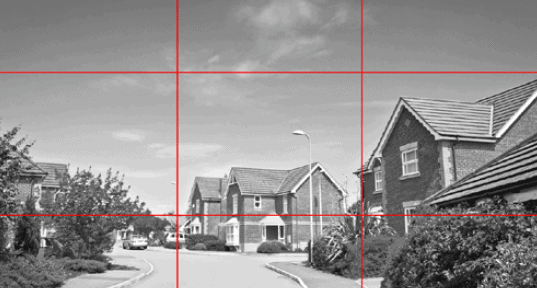Photography Framing.

Understanding the importance of framing when taking photos
People often put photographs into frames as a way of displaying and drawing attention to their favourite pictures; however, there is another type of framing that you should know about in order to make sure you are getting the most out of your photos.
Framing the subject
Framing is the technique of drawing attention to the subject of your image by considering where it should sit within the scene. This in short allows the subject to be clearly and obviously displayed making sure nothing is missed. The benefits of framing pictures include:
- Capturing the entirety of the subject – when taking a picture of something, that something should always be completely in the shot. Important information could be missed and the detail the photo communicates can become misconstrued if the subject is badly framed.
- Photo context – sometimes it is necessary to add more into a picture than what you are taking a picture of, for example you may take a picture of an archway but without seeing the archway in relation to the rest of the building it can be misleading.
- Leading the eye towards the main focus – some images can draw the viewer into the picture just by their shape, others can not only draw the eye into a picture but keep it there for longer.
Framing should be considered when you are setting up your shot. Before you take the picture you need to ask yourself “what is it i am trying to communicate? What needsto be in the frame”? For surveyors, pictures will usually be used to reinforce site notes and prove the property is in the condition stated. This means it is just as important to get the pictures right. It is imperative that your words and your photos complement one another showing the true condition of the property.
So how do you frame photos properly? It is all about the subject. First work out what the subjects is, and then make sure the subject is fully within the frame. Remember, this is important because if you miss anything you will have to go back and re-capture the evidence. It is therefore good practice to take too many shots rather than too few.

Figure 1 – A badly framed picture of a dog
The Rule of Thirds
The Rule of Thirds is perhaps the most well-known ‘rule’ of photographic composition and is the basis for well balanced and interesting shots. The rule can be broken as ignoring it doesn’t make your images unbalanced or uninteresting, however, following it will make sure your photos are framed correctly.
The basic principle behind the rule of thirds is to imagine breaking an image down into thirds (both horizontally and vertically) so that you have 9 parts.
As follows:

Figure 2 – Adding a grid, some cameras have this as an optional setting so that it does not need to be imagined
With this grid in mind the ‘Rule of Thirds’ now identifies four important parts of the image that you should consider placing points of interest in as you frame your image. If you place points of interest in the intersections or along the lines then your photo becomes more balanced and will enable the viewer to engage with it naturally.

Figure 3 – A photo’s points of interest that the human eye naturally focusses on
People’s eyes naturally go to one of the intersection points rather than the centre of the shot – using the Rule of Thirds works with this natural way of viewing an image rather than working against it. In figure 4, the head of the subject has been purposely placed on one of the intersecting points, especially his eyes, which are a natural point of focus for a portrait. His tie and flower also take up a secondary point of interest.

Figure 4 – A portrait composition using the Rule of Thirds
In a similar way a good technique for landscape shots is to position horizons along one of the horizontal lines as demonstrated in figure 5 below.

Figure 5 – A landscape composition using the Rule of Thirds
Using the Rule of Thirds comes naturally to some photographers but for others it may take a little time and practise. In learning how to use the Rule of Thirds the most important questions to be asking yourself are:
- What are the points of interest in this shot?
- Where am I intentionally placing them?
When you are next out taking photos, try and remember the ideas in this article. First work out what the subject is and make sure it is within the frame. Secondly consider how the subject should be placed within the frame and whether there are any other elements that need to be in the photo to reinforce the subject itself.